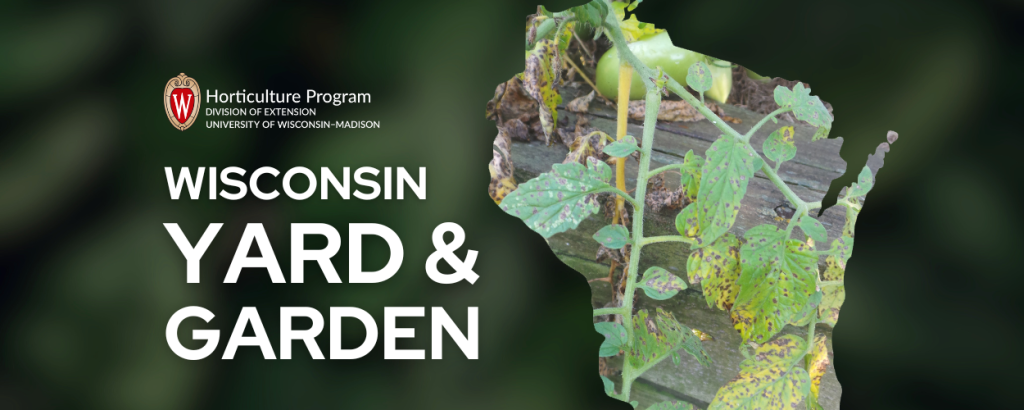
Tomatoes are extremely popular vegetables for Wisconsin gardeners, whether it be a couple of plants in patio planters or dozens planted in large garden plots. Regardless of the numbers or types of tomatoes, issues may arise during the growing season that require diagnosis and attention.
Harvesting fresh tomatoes is highly anticipated and there is nothing worse than picking that first big ripe tomato only to find the bottom half rotten! This is blossom end rot, which we see every summer with varying severity. Blossom end rot is due to a lack of calcium in developing fruit, typically caused by fluctuating soil moisture reducing calcium uptake. Keep this problem in check by maintaining uniform soil moisture levels via mulching and watering during any dry spells. Monitor soil conditions closely, especially once fruit is developing on plants.
Early blight and septoria leafspot are fungal leaf diseases infecting tomato plants, especially during wet weather. Initial symptoms typically appear on the lower foliage of plants, starting as deep brown or blackish spots, followed by yellowing or browning of leaves. Early blight spots will develop concentric rings and a target-like appearance, often with a yellow halo. Septoria spots typically have whitish centers and dark borders. Both diseases may progress up plants, especially during wet, humid conditions, and even kill entire plants.
Removing infected leaves, or even entire plants, might help reduce spreading of disease. Fungicides may provide some level of protection from infection but need to be applied to foliage early, with repeated applications, and do not reverse damage already occurred. Choose fungicides labeled for vegetable crops containing either chlorothalonil or copper. Always read thoroughly and follow all label directions.
Good gardening practices can reduce fungal disease issues. Mulching will help reduce soil splashing onto lower foliage, which often includes fungal spores. Do not apply excessively thick mulch, however, as high humidity favors disease. Improve air circulation around tomato plants by avoiding closely spaced plantings, using cages, or staking. Remove infected plants at the end of the season. In future years, practice crop rotation and choose early blight- and septoria-resistant tomato cultivars.
Tomato leaves may also show yellowing from lack of nitrogen. This is especially common in containers, due to frequent watering and low soil fertility. Adding nitrogen fertilizer will help alleviate this problem but be careful not to over-apply.
Foliage disappearing from your tomato plants? Tomato hornworms are the probable cause, as they can eat considerable amounts of foliage off tomato plants. Oftentimes gardeners notice hornworm damage before seeing the large green caterpillars. Look carefully and pick them off by hand. Insecticides such as Bacillus thuringiensis kurstaki are also an option for widespread infestations.

About the Author
Bruce Spangenberg is a Horticulture Outreach Specialist with UW-Madison Division of Extension. Get answers to your lawn, landscape and garden questions anytime at “Ask Your Gardening Question.”




